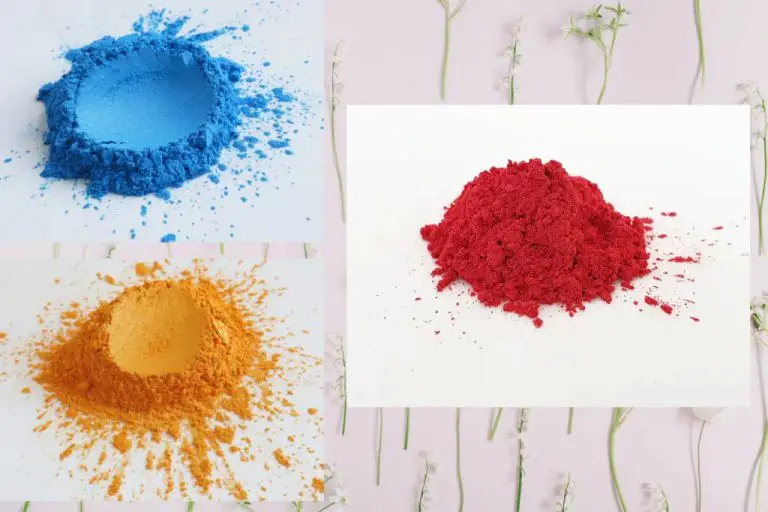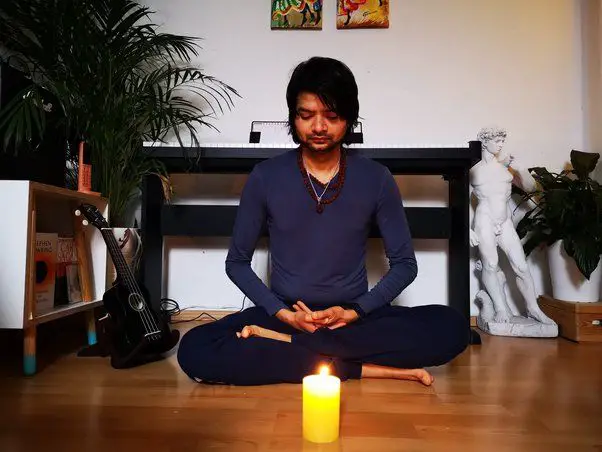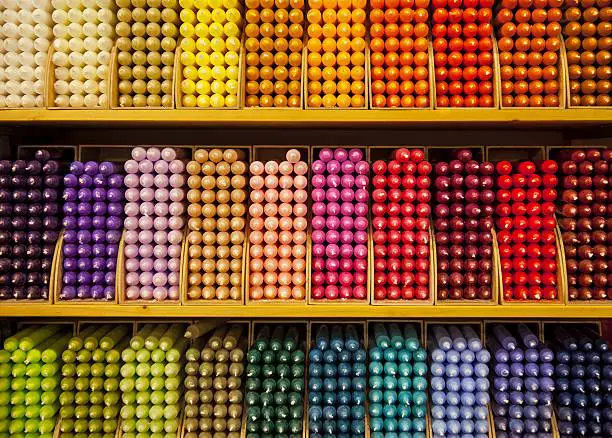What Color Candles Are Used In Prayer?
Candles have been used in prayer and spiritual rituals across many faiths and traditions throughout history. The flickering flame of a candle symbolizes hope, life, and the human spirit’s connection to the divine. Candles also represent wisdom and enlightenment, and are often lit as offerings or to focus one’s energy and intentions during prayer or meditation. The warm glow of candles creates a peaceful ambiance and sacred space conducive to spiritual reflection. In many religious ceremonies and services, candles hold special significance on altars and in places of worship. The colors of the candles used are often carefully chosen to represent different spiritual meanings or commemorate certain holidays and observances. While practices vary between faiths, the lighting of candles remains a powerful and meaningful part of prayer for many believers around the world.
Colors in Christianity
In Christianity, candles hold a special significance in religious ceremonies and rituals. Specific colors are often used for candles to represent different meanings and symbols.
One of the most well-known uses of candles is the Advent wreath. The Advent wreath contains five candles – three purple, one pink, and one white. The purple candles symbolize prayer, penance, and sacrificial giving. The pink candle is lit on the third Sunday of Advent to represent joy. Finally, the white candle in the center represents Christ and is lit on Christmas Eve or Christmas Day.
Other colors used in Christianity include:
- White – Purity, joy, innocence
- Red – The Holy Spirit, blood of martyrs
- Green – Growth, spiritual development
- Blue – Mary, truth, wisdom
- Black – Death, mourning
Churches often vary the liturgical color used based on the Church calendar. These colors accent the atmosphere of worship and symbolize different seasons or days.
Colors in Catholicism
Catholics use candles of different colors during Mass and for sacraments and rituals. The color of the candles carries symbolic meaning related to the liturgical feast or sacrament.
During Ordinary Time, priests wear green vestments and altar cloths are green. Green represents hope, growth, and life. White candles are used for feasts of Mary, the angels, saints who were not martyrs, All Saints Day, St. John the Baptist, St. John the Evangelist, the Chair of St. Peter, and the Conversion of St. Paul.
Red candles symbolize the blood of Christ and the martyrs of the Church. They are used on Palm Sunday, Good Friday, Pentecost, feasts of the Apostles, Evangelists and martyrs. Violet candles signify penance. They are used during Advent and Lent. Rose candles are used on Gaudete and Laetare Sundays during Advent and Lent respectively. The rose color represents joy and hope.
For sacraments, white candles are used for baptisms to represent the new life in Christ. At confirmations, red candles signify the candidate being sealed with the gifts of the Holy Spirit. At weddings, white candles represent the unification of the couple into one under Christ. For anointing of the sick and funerals, white or violet candles remind us of the resurrection and eternal life.
Colors in Judaism
Candles play an important role in Jewish worship and rituals. Here are some of the main colors used for candles in Judaism and their significance:
The two candles used on Shabbat are traditionally white. These Shabbat candles represent the two commandments to “remember the Sabbath day” and “keep it holy”. They are lit before sunset each Friday to usher in the holy day of rest.
Hanukkah is represented by candles in a nine-branched menorah. A special ninth candle called the shamash is used to light the others. The colors reflect the miracle of the oil that burned for eight days. Blue and white are commonly used to represent the colors of the tallit (prayer shawl). Silver is used to recall the menorah’s construction in the Temple. Some also use rainbow colors to represent God’s splendor.
Colors in Hinduism
In Hinduism, candles are not traditionally used for prayer. Instead, oil lamps called diyas are lit for puja (prayer rituals) and religious ceremonies. However, colors do play an important symbolic role.
During Diwali, the festival of lights, diyas are lit to signify the triumph of light over darkness and good over evil. Though diyas can be made from clay and come in various colors, the most common color is orange, representing auspiciousness and prosperity.
Other symbolic colors in Hindu puja rituals include:
- Red – associated with Shakti or divine feminine energy.
- Yellow – considered auspicious and used to invoke Lakshmi, goddess of wealth.
- Green – represents new beginnings and growth.
- White – signifies purity and used to worship deities like Krishna, Vishnu, or Saraswati.
- Blue – evokes wisdom and is offered to Shiva.
Though not candles, the colored flames of diya lamps carry deep spiritual symbolism in Hindu rituals and ceremonies.
Colors in Buddhism
In Buddhism, candles and incense are lit before statues and images of the Buddha as a sign of respect. Candles also illuminate Buddhist shrines known as butter lamps. Color symbolism plays an important role in Buddhist rituals and art.
Some common color meanings in Buddhism include:
- White – purity, enlightenment, and peace
- Yellow – the middle way, moderation
- Orange – renunciation
- Red – subjugation of passion
- Blue – wisdom and tranquility
- Green – nature and new growth
- Purple – mysticism and spirituality
Candles are often colored based on their symbolic meaning. For example, white candles may be used to represent cleansing or enlightenment. Red candles can symbolize overcoming obstacles or defusing anger. Purple candles may be lit during meditation. Candles are employed thoughtfully in Buddhist rituals to help focus the mind and bring awareness to specific qualities or teachings.
Colors in Islam
In Islam, candles and their colors also carry spiritual significance. Green and white candles, in particular, have special meaning for Muslims.
The color green holds a place of honor in Islam. It was reportedly the favorite color of the Prophet Muhammad and is considered a symbol of nature and life. Green is strongly associated with paradise in Islamic tradition. The Dome of the Rock shrine in Jerusalem features green tiles on its exterior. During Ramadan, some mosques decorate with green lights.
White represents purity, peace, and humility in Islam. White candles are often used to welcome Ramadan, the holy month of fasting and spiritual reflection. During Ramadan, mosques are illuminated with white lights at night. White candles also decorare festive tables to celebrate Eid al-Fitr, the feast ending the fast of Ramadan.
Colors in Paganism
In paganism, candles play an important role in rituals, ceremonies, and magic. Pagans use candles of specific colors based on the purpose of the ritual or spell. Candle color magic is rooted in the belief that different colored candles possess different energies and vibrations that can be harnessed for magical purposes.
Some of the most common candle colors used in pagan rituals and their associations are:
- Red – love, passion, courage, strength
- Pink – romance, friendship, emotional healing
- Orange – creativity, motivation, confidence
- Yellow – intellect, communication, clarity
- Green – growth, fertility, harmony with nature
- Blue – peace, calm, loyalty, protection
- Purple – wisdom, spirituality, psychic development
- Black – banishing negativity, binding, breaking bad habits
- White – purity, truth, healing, spirituality
Candle magic also incorporates the elements of earth, air, fire and water. Elemental colored candles include:
- Earth – green, brown
- Air – yellow, white
- Fire – red, orange
- Water – blue, aqua
Pagans carefully select candle colors based on the magical goal they want to achieve, and often use color combinations to enhance the potency of spells and rituals. The symbolism and energy of colors is an integral part of pagan practice.
Psychology of Candle Colors
Candle colors can have a psychological impact on moods and emotions. This is because colors trigger associations in our minds that elicit certain feelings and reactions.
For example, red candles are often associated with love, passion, and excitement. The color red increases heart rate and stimulates brain activity. Red candles may intensify romantic feelings or be used for spells regarding lust and sexuality.
Blue candles can evoke feelings of calmness, relaxation, and tranquility. Blue light has been shown to lower heart rate and blood pressure. Blue candles are sometimes used in meditation for their peaceful, centering effects. The color blue can also represent wisdom, loyalty, and truth.
Green candles connect to feelings of growth, health, and prosperity. Green is associated with renewal and fresh starts. Using green candles in rituals can signify new opportunities, abundance, or healing. The color green is also linked to balance and harmony.
Yellow candles brighten moods and elicit happiness and optimism. Yellow light stimulates mental clarity, so yellow candles may aid concentration. Yellow is also associated with confidence, intellect, and communication. However, too much yellow can increase anxiety.
Purple candles are thought to increase spiritual awareness and encourage creativity. Purple represents mysticism, imagination, and magic. It also signifies dignity, royalty, and luxury. Purple candles can be used for ritual magic and manifesting goals.
Black candles symbolize endings, protection, and banishing negativity. Black absorbs light, so black candles can provide comfort during grief or difficult transitions. But too much black can be depressing, so black candles are best used sparingly.
White candles represent purity, truth, and clarity. White light contains all wavelengths, so white candles work for any purpose. White candles are used in spells regarding peace, truth, healing, and insight. Overall, candle color psychology demonstrates how colors impact moods in ritual use.
Conclusion
The use of colored candles holds great significance across many faiths and spiritual practices. Though each religion ascribes different meanings to various candle colors, some common threads emerge. White candles often represent purity, peace or divination. Red candles frequently symbolize love, passion or blood. Blue candles can signify healing, tranquility or truth. Yellow or gold candles are linked with wisdom, intellect or confidence. Green candles represent nature, growth, health or finance. Black candles can mean banishing or binding as well as formality. Overall, the choice of candle color in rituals and ceremonies connects the practitioner to specific energies and intentions. Candle colors help focus the mind and spirit during prayer, meditation or spellwork. Despite varied symbolic interpretations, colored candles remain a constant visual tool to deepen faith, manifest goals and find guidance across religions.






